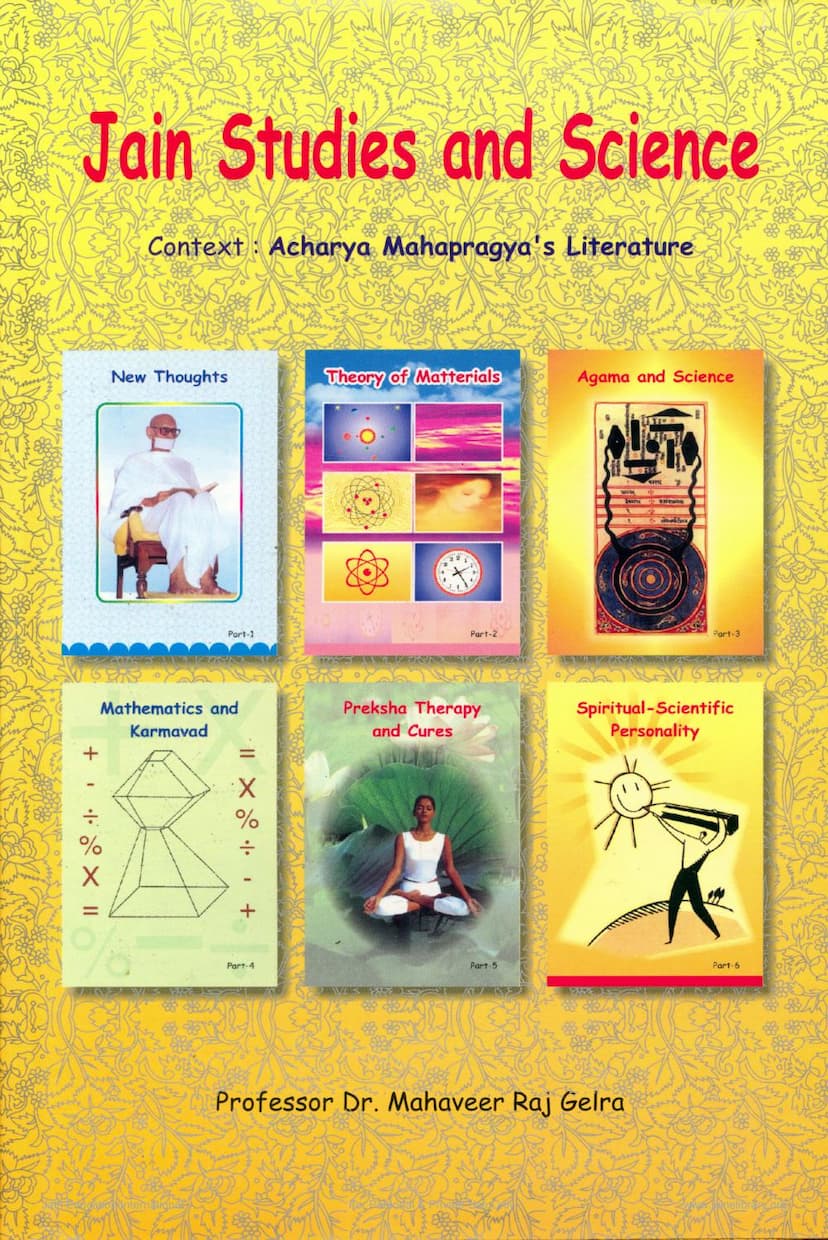Jain Studies And Science
Added to library: September 2, 2025

Summary
The book "Jain Studies and Science: Context: Acharya Mahapragya's Literature" by Professor Dr. Mahaveer Raj Gelra, edited and translated by Er. Piyush Jain and published by Jain Vishva Bharati Institute, is a comprehensive exploration of the intersections between Jain philosophy and modern scientific principles. The work is deeply influenced by the literature and teachings of Acharya Mahapragya, who is presented as a super-intelligent human deeply versed in Jain teachings, ancient Indian philosophy, modern psychology, and contemporary scientific principles.
The central conviction of the book is that Acharya Mahapragya has effectively integrated scientific understanding into his spiritual and philosophical discourse, making Jain teachings accessible even to critical minds. The author highlights Acharya Mahapragya's view that while scientific progress is irreversible, its potential harms can be mitigated by integrating it with religious thought, aiming for a healthy body and an eternal soul.
The book is structured into six sections, each delving into specific areas of convergence:
Section 1: New Thoughts This section focuses on Acharya Mahapragya's novel propositions, including his Principle of Coexistence of Opposites (termed "copposites"). This principle posits that seemingly opposing forces are complementary and essential for a complete picture, citing examples from science like matter-antimatter and from Jain scriptures like the concept of Lok-Alok. It also discusses his Principle of Equivalence of Souls, which emphasizes universal friendship and proactive behavior, drawing parallels between Jain teachings and psychological insights.
Section 2: Theory of Mattereals and Jain Philosophy This section delves into the Jain concept of "mattereals" (dravyas) and their correlation with modern scientific understanding of matter and energy. It explores the Jain view of matter as "transformed eternity," aligning with scientific laws like the conservation of mass and energy (E=mc²). The book discusses the Jain cosmological model, including the concepts of Lok-Alok, Dharmastikaya (Dynaons), and Adharmastikaya (Statons), drawing comparisons with scientific theories on space, time, and the universe. It also examines the atomic theory from a Jain perspective, detailing the properties of pudgals (particles) and their relationship with sensory perception and the soul, and critically analyzes the scientific aspects of Anekanta (non-absolutism) and Syadvada, finding parallels with theories of relativity and uncertainty.
Section 3: Agama and Science This section explores the scientific underpinnings within Jain scriptures (Agamas). It presents a comparative study of Jain concepts of motion and speed with the laws of motion discovered by Newton and Einstein, highlighting the Jain understanding of different gravitational fields in the universe's three realms (Lokas). It also discusses the Jain perspective on atomic motion and introduces concepts like Bhavitatma (super-human beings with extraordinary powers) and the Jain descriptions of cosmic phenomena like Tamaskaya and Krishnarajji, drawing resemblances to the scientific concept of black holes.
Section 4: Jain Mathematics and Karmavad This section focuses on the sophisticated mathematical systems developed within Jain traditions, including units of measurement, concepts of numerate, innumerate, and infinite numbers, and the significance of the number eight. It then delves into the intricate theory of Karmavad (Karma doctrine), explaining its philosophical, psychological, and genetic aspects. The book explores the mathematical analysis of karma, the concept of karma-transformation, and the relationship between karma and human dexterity, highlighting how Jain principles offer a framework for understanding and managing one's destiny.
Section 5: Preksha Meditation, Therapy and Cures This section highlights the practical applications of Jain philosophy, particularly through the system of Preksha Meditation developed by Acharya Mahapragya. It details how Preksha Meditation, incorporating elements of yoga, meditation, and therapy, can be used for physical and mental well-being. The book discusses sound therapy, color therapy (Leshya), and the scientific research validating the therapeutic benefits of these practices in managing ailments like heart conditions, high blood pressure, asthma, digestive disorders, and depression. It also examines the psychological aspects of human behavior, emotions, and the functioning of the brain and endocrine system, proposing a scientific approach to spiritual development.
Section 6: Spiritual-Scientific Personality This section presents dialogues and speeches between Acharya Mahapragya and Dr. A.P.J. Abdul Kalam, the former President of India. These interactions underscore the profound convergence of spiritual wisdom and scientific acumen, emphasizing the need for a balanced development of both to address societal challenges and foster national progress. The Surat Spiritual Declaration, a key outcome of these discussions, outlines a vision for "Enlightened Citizenship" through the integration of spiritual and scientific principles.
Key Themes and Contributions:
- Amalgamation of Science and Spirituality: The book's primary contribution is its detailed demonstration of how Jain philosophy, particularly through the lens of Acharya Mahapragya's work, is inherently compatible with and can be illuminated by modern scientific discoveries.
- Scientific Validation of Jain Concepts: It systematically presents Jain philosophical concepts – from the nature of matter and the universe to the workings of the mind and soul – and draws parallels with contemporary scientific theories, offering a new perspective for understanding ancient wisdom.
- Practical Application of Philosophy: The work emphasizes the practical application of Jain principles, especially through Preksha Meditation, for personal well-being, emotional regulation, and societal harmony.
- Emphasis on Anekanta: The principle of Anekanta (non-absolutism) is highlighted as a scientific and philosophical approach that fosters tolerance, understanding, and conflict resolution.
- The Role of Acharya Mahapragya: The book positions Acharya Mahapragya as a pivotal figure who has bridged the gap between traditional Jainism and modern science, making profound spiritual insights accessible through a scientific framework.
In essence, "Jain Studies and Science" is a testament to the enduring relevance of Jain philosophy in the modern age, presented through the insightful synthesis of scientific knowledge and spiritual wisdom, guided by the profound understanding of Acharya Mahapragya.